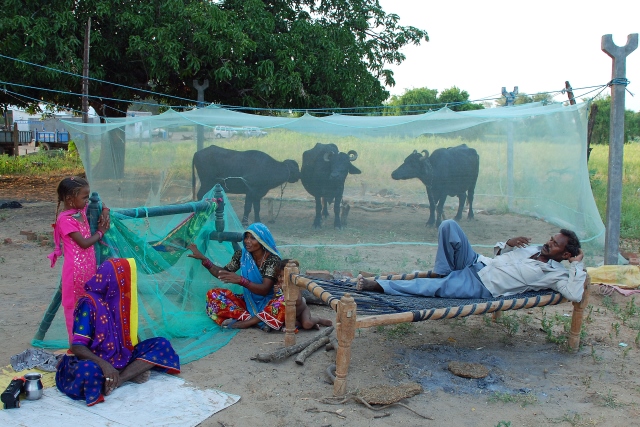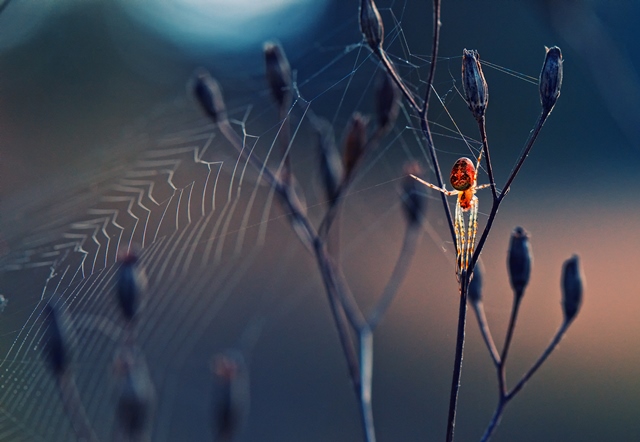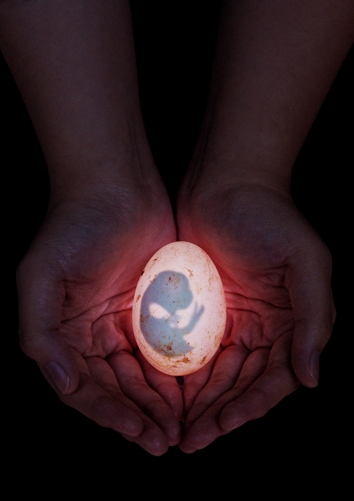Photography Competition Winners 2014
The theme for the photography competition in 2014 theme was Home, Habitat and Shelter.
The Society would like to congratulate the winners who were celebrated at the Biology Week Annual Award Ceremony.
In the press
The 2014 winners were featured in print in The Times on 15th October (page 15). The shortlist was featured online in The Guardian, The Independent, New Scientist, and the Daily Mail.
Photographer of the Year 2014: Winner 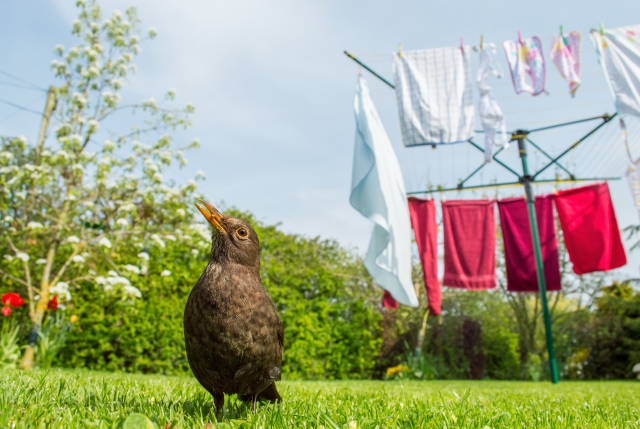
The Suburban Mum by Billy Clapham
Taken: Utterby, Lincolnshire
Long before the invention of the human garden came along, blackbirds, along with other garden birds were mostly strictly rural. But over decades many bird species have adapted to living in such a bizarre habitat and to their human co-inhabitants. Here a female blackbird collects dried mealworms, placed out by the humans they share this habitat with, in order to take them back to her chicks in the nest also situated in this garden. I think the juxtaposition of this wild bird, working hard to feed her chicks, with the manicured grass and clothing strewn washing line emphasises the leap these birds have made to successfully make a living in our own back gardens. The fact I was lying right behind my camera and only had to wait a relatively short amount of time to get this shot is also a testament to this particular blackbird mums ability to habituate to humans, and take advantage of our generosity!
Photographer of the Year 2014: Runner-up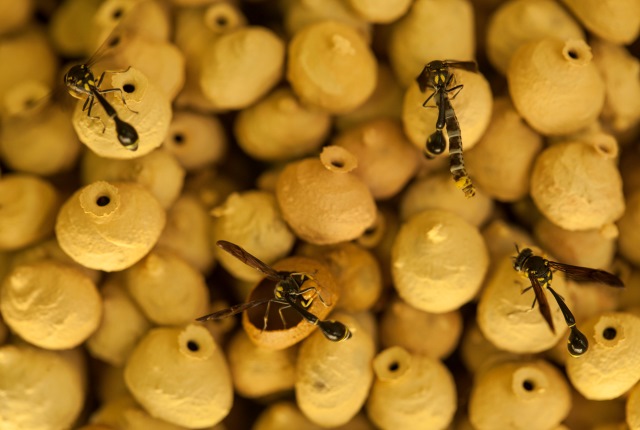
Parental care in parasitoid wasps by Thomas Endlein
Taken: Brunei Darussalam (Borneo)
Parasitoid wasps spend a lot of effort in providing a good start for their offspring: not only do they build shelter in form of intricate clay pots but they do also give food provision in form of a paralysed caterpillar. The caterpillar needs to be just the right size to fit through the narrow opening of the pot and will be the food for the growing larva which is then deposited on the caterpillar with help of a very long ovipositor, reaching through the opening of the clay pot. In the picture are shown several stages of this behaviour: in the bottom left a wasp is busy adding a `mouthful' of clay to the rim of an almost finished pot. Another wasp (top right) is just about to feed in a caterpillar through the opening of the pot and the wasp in the bottom right is sealing the opening.
Photographer of the Year 2014: Highly commended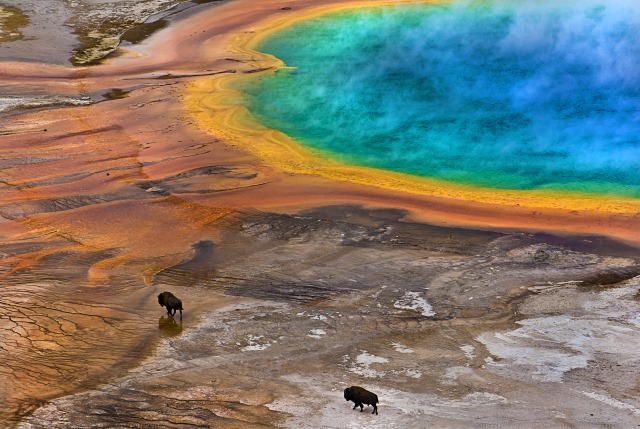
Bisons on Grand Prismatic Spring by Lukas Gawenda
Taken: Grand Prismatic Spring, Wyoming, USA
Two Bisons on the largest colourful hot spring in the USA, and the third largest in the world - the Grand Prismatic Spring, located in the Midway Geyser Basin in Yellowstone National Park.
Young Photographer of the Year 2014: Winner 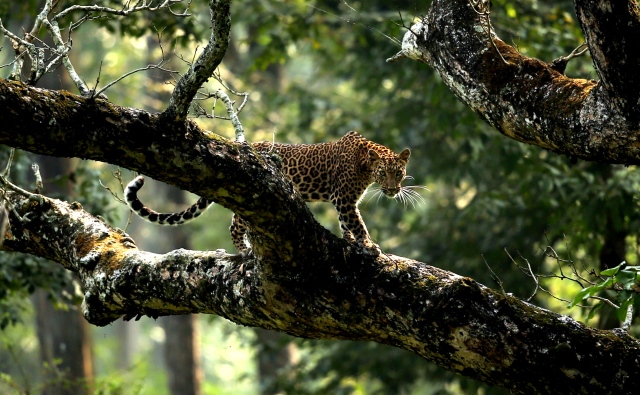
Courage doesn’t always ROAR by Nagarjun Ram
Taken: Kabini, Karantaka, India
This is the home, habitat and shelter of this leopard clicked at Kabini by an amateur photographer.
Young Photographer of the Year 2014: Runner-up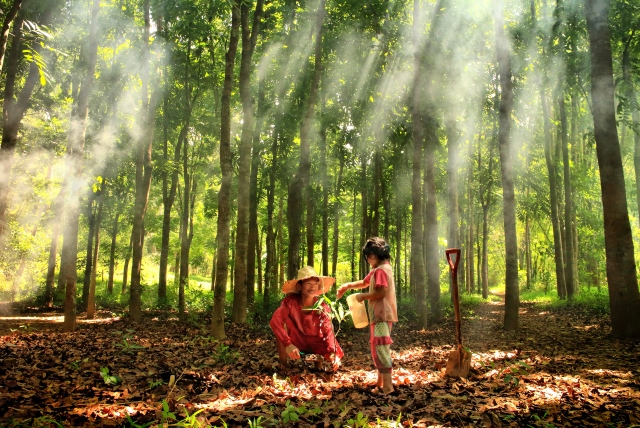
Man-made forest by Ysabel M Victoriano
Taken: Rodriguez, Rizal, Philippines
Rodriguez, Rizal is known place of quarrying operation that causes destruction of forest cover ,soil erosion and siltation of river that deprive wild life, fish and other micro-organism of their natural habitat. To mitigate the environment destruction, the people living near wawa dam- former water reservoir, planted mahogany tree and create a man-made forest.
Young Photographer of the Year 2014: Highly commended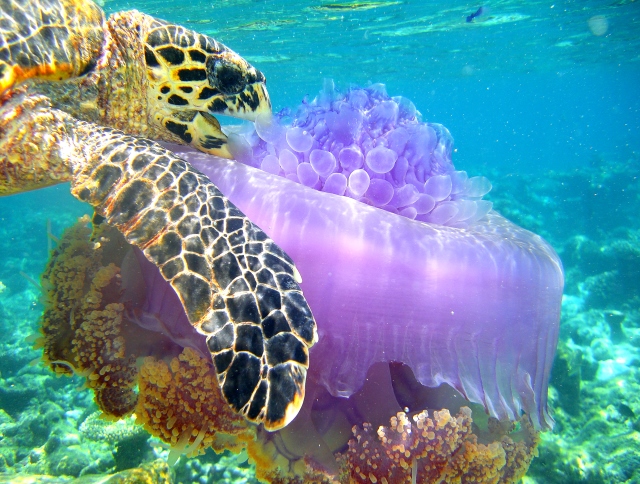
Meal Time by Boris Barath
Taken: Madoogali, Ari Atoll, the Maldives
Eating is vital for organisms for survival.
Special mentions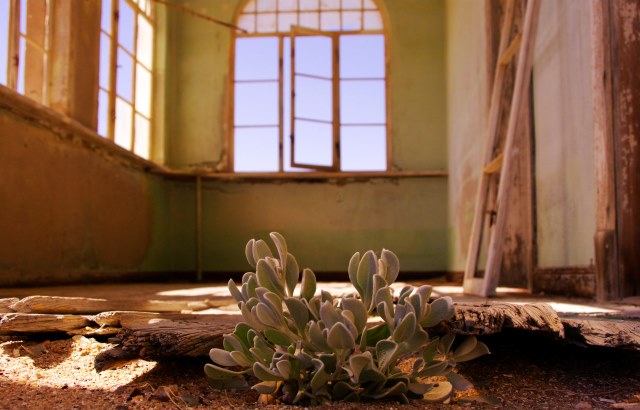
Striving Succulent by Kelsey Green
Taken: Kolmanskop Ghost Town, Namibia
Many years ago Kolmanskop was a thriving mining town in the harsh Namib Desert near Luderitz, Namibia. After depleting the minerals the town was deserted and left to the elements which quickly took over. There are few plants that can survive in such an environment and they must quickly take advantage of any available shelter, even if it is a dilapidated house. The obvious lack of water in the region allowed evolution to form such squishy leaves as found on succulent plants which allow them to thrive in such difficult habitats.
Life and Environment by Dimple Pancholi
Taken: Nal Sarovar, Ahemadabad, Gujarat, India
The farmer in the following picture is saving the family from mosquitos in the farmer. The farmer is safely containing the animals.
Spider like from another world by Krasimir Matarov
Taken: Predel, Bulgaria
The photo shows a spider during sunset in its environment habitat.
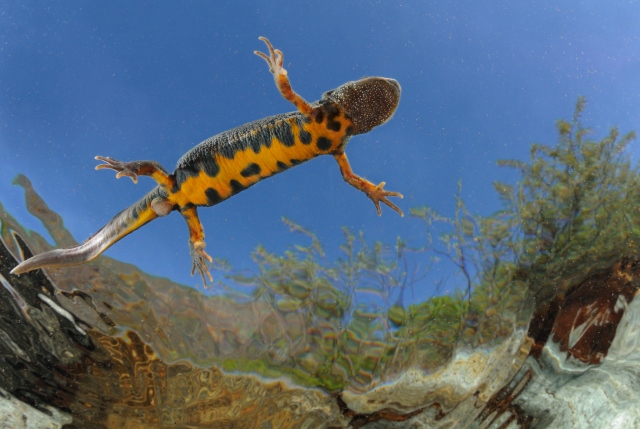 A lively belly in the freshwater by Matteo Riccardo Di Nicola
A lively belly in the freshwater by Matteo Riccardo Di Nicola
Taken: Sesia Valley, Piedmont, Italy
The picture shows the freshwater habitat of the Italian crested newt, under an unusual perspective (thus being able to appreciate its magnificent belly). It also shows the posture of the newt when it is “stationed” below the water surface.
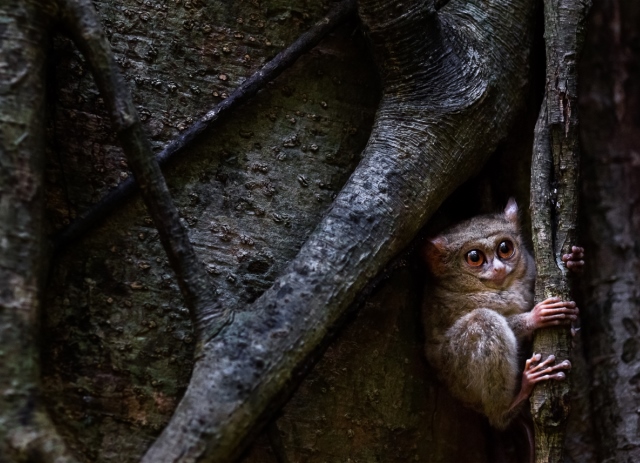 Spectral Tarsier by Wolfgang Weinhardt
Spectral Tarsier by Wolfgang Weinhardt
Taken: Tangkoko, Northern Sulawesi, Indonesia
At the time of my visit the BBC primed a tarsius-tree with dozens of cameras for a 1year observation of the species. I was lucky to spend some time, especially for the proper black macaque population of Tangkoko.
A Shelter Designed by Nature by Robert Cabagnot
Taken: Antipolo City, Rizal, Philippines
An embryo in its natural habitat before they are ready to enter and face the natural environments the world has to offer. In a hardened eggshell that serves as a shelter to protect the fragile embryo, life is sustained until full development.
Special thanks to judges
Catherine Draycott, Wellcome Images (Chair)
Linda Pitkin, Underwater photographer
Tim Harris, Nature Picture Library and Bluegreen Pictures
Alex Hyde, natural history photographer and lecturer at the University of Nottingham
Support
The Society wishes to thank Eppendorf for their support of this competition.



